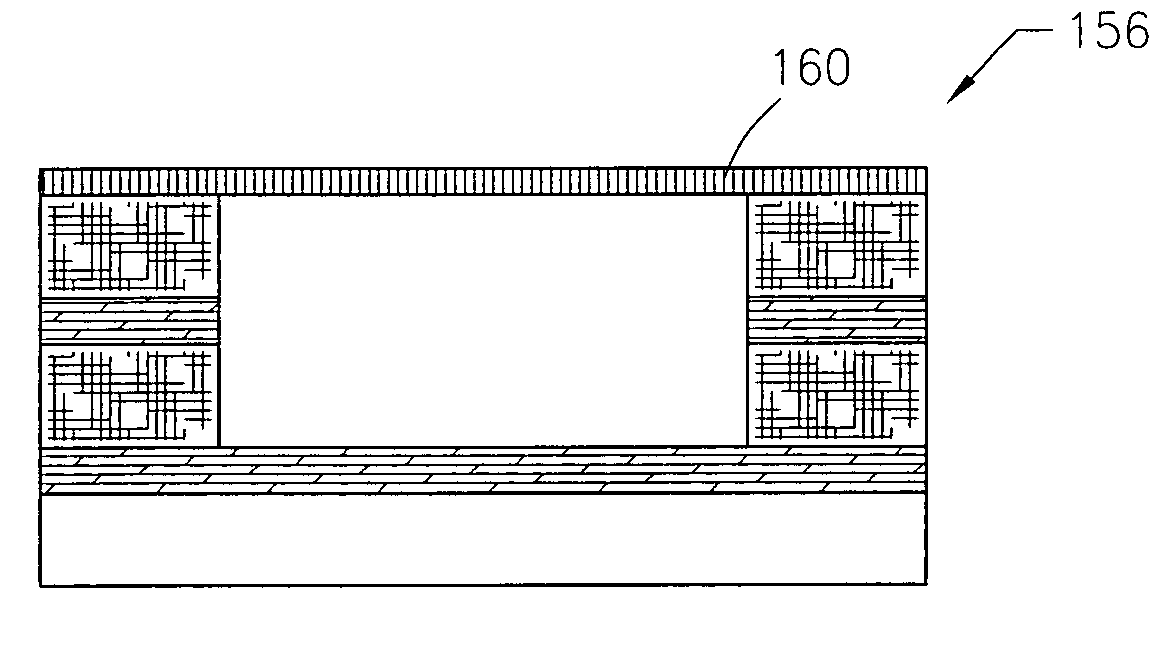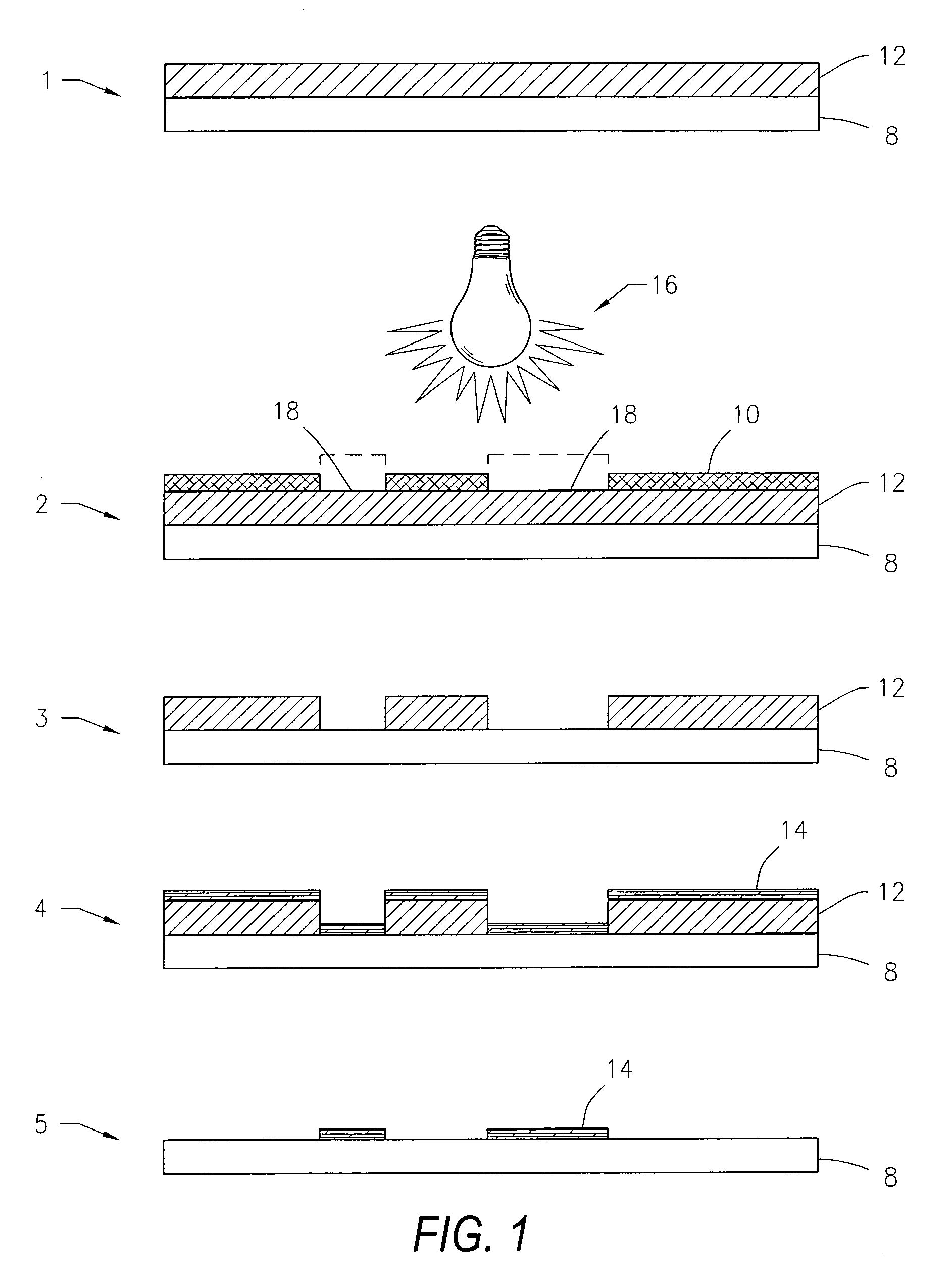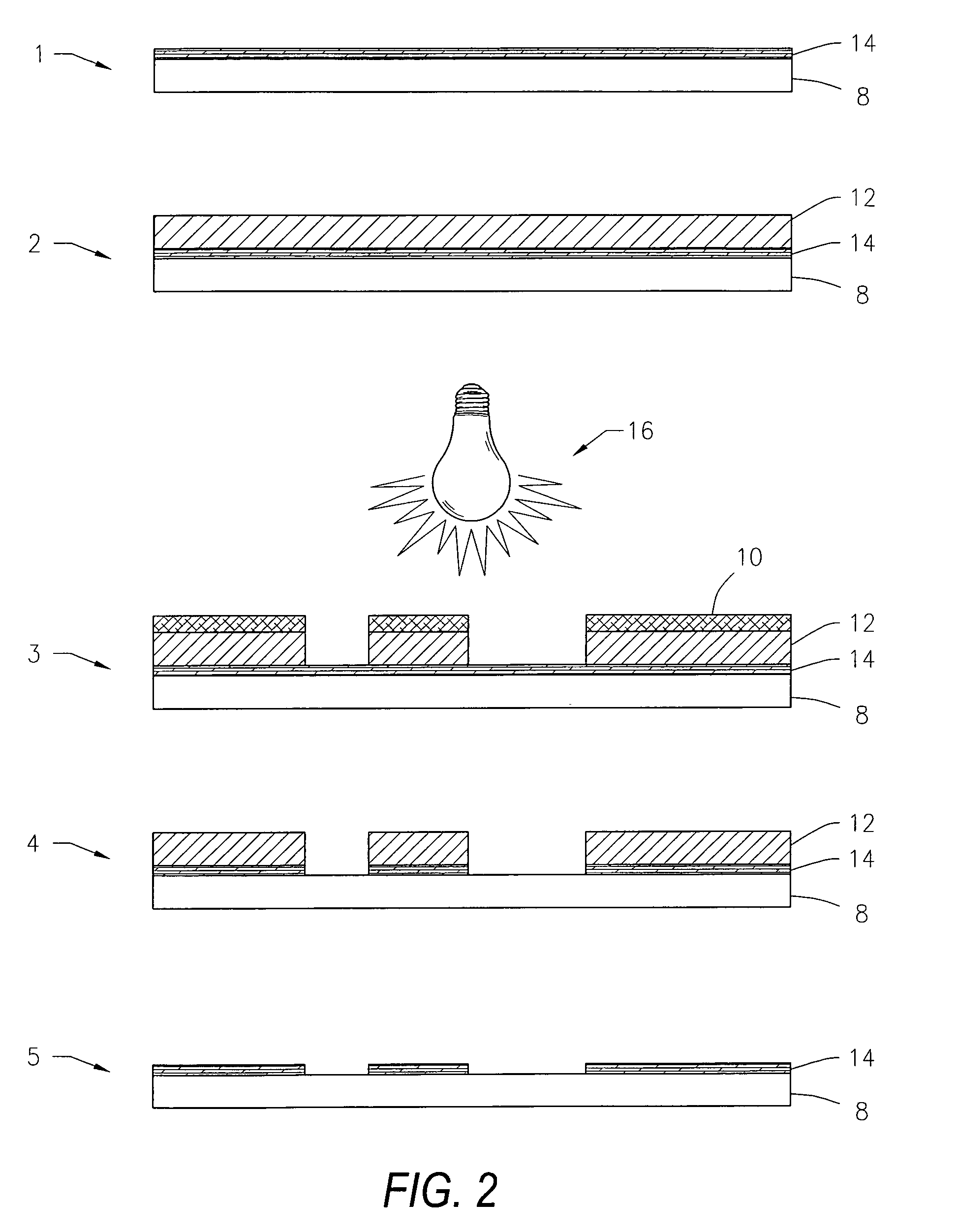Multilayer microcavity devices and methods
a microcavity and multi-layer technology, applied in the field of microelectrodes, can solve the problems of constructing electrodes with dimensions smaller than 1 m, unable to address the formation of small cavities or the placement of probes, and unable to achieve the effect of detecting in a fast time scal
- Summary
- Abstract
- Description
- Claims
- Application Information
AI Technical Summary
Benefits of technology
Problems solved by technology
Method used
Image
Examples
example 1
[0152]Microfabricated recessed microdisk electrodes (RMDs) of 14 and 55 μm diameter were constructed. For evaluation of electrode function, both faradaic current in Ru(NH3)63+ solution and charging current in KNO3 solution were measured with cyclic voltammetry (CV). At slow scan rates (0.1 Vs−1), where radial diffusion dominates, the steady state measured with 55 μm RMD is 53.5±0.48 nA and the 14 μm RMD is 5.39±0.96 nA. At fast scan rates (204 Vs−1), where linear diffusion dominates, the current measured with the 55 μm RMD is 784.6±42.0 nA and the 14 μm RMD is 35.4±9.5 nA. The dependence of capacitance on scan rate of the RMDs was found to be similar to that of a macroelectrode, indicating good adhesion between the insulator and the electrode. The signal-to-noise ratio of the RMD compared to a planar disk microelectrode (PDM) is on average 4 times greater for both of the stirred solutions.
[0153]All chemicals are reagent grade and used as received. Aqueous solutions are prepared with...
example 2
[0165]Construction and characterization of an electrochemical cell containing two individually-addressable microelectrodes, a disk and a nanoband are described. The diameter of the cell is 53 μm and the depth 8 μm. The RMD and TNE separated vertically by 4 μm. Both electrodes are evaluated using cyclic voltammetry in Ru(NH3)63+ and electrolyte. The faradaic response is compared with theories for radial and linear diffusion for both geometries. The response of the recessed disk microelectrodes (RMD) is compared to previous work211 to evaluate the effects of depth of the response. Capacitance as a function of scan rate for both microelectrodes is compared to a macroelectrode to determine the quality of construction.
[0166]All chemicals are reagent grade and used as received. Aqueous solutions are prepared with high purity deionized water (Milli-Q). A gold coin (Credit Suisse, 99.99%) and chromium plated tungsten rod (R. D. Mathis) served as sources for thermal evaporation. Silicon wafe...
example 3
[0178]This example illustrates how microcavities may be modified in order to form troughs having electrodes on either side. They retain the small dimensions regarding height and width, but have macroscopic length.
[0179]All reagents (Aldrich) were reagent grade and were used without further purification, unless otherwise specified. Deionized (DI) water was prepared using an ultrapure water system (Millipore, France model Milli Q RG). Sulfuric acid, hydrogen peroxide, iso-propanol were electronic grade (J. T. Baker). A cold coin (Canadian Maple Leaf, 99.9%) and chromium-plated tungsten rods (R. D. Mathis) were used as sources for thermal evaporation. For photolithography, HR 200 negative photoresist, WNRD negative resist developer, PF thinner and universal photoresist stripper Nophenol (OCG Microelectronic Materials, Inc.) were used.
[0180]Deposition of Chromium, Gold and Silicon Nitride. Glass slides (Fisher Scientific) were cut to 1 in.×1 in. and cleaned with a 7:3 (v / v) solution of ...
PUM
| Property | Measurement | Unit |
|---|---|---|
| height | aaaaa | aaaaa |
| diameter | aaaaa | aaaaa |
| volume | aaaaa | aaaaa |
Abstract
Description
Claims
Application Information
 Login to View More
Login to View More - R&D
- Intellectual Property
- Life Sciences
- Materials
- Tech Scout
- Unparalleled Data Quality
- Higher Quality Content
- 60% Fewer Hallucinations
Browse by: Latest US Patents, China's latest patents, Technical Efficacy Thesaurus, Application Domain, Technology Topic, Popular Technical Reports.
© 2025 PatSnap. All rights reserved.Legal|Privacy policy|Modern Slavery Act Transparency Statement|Sitemap|About US| Contact US: help@patsnap.com



